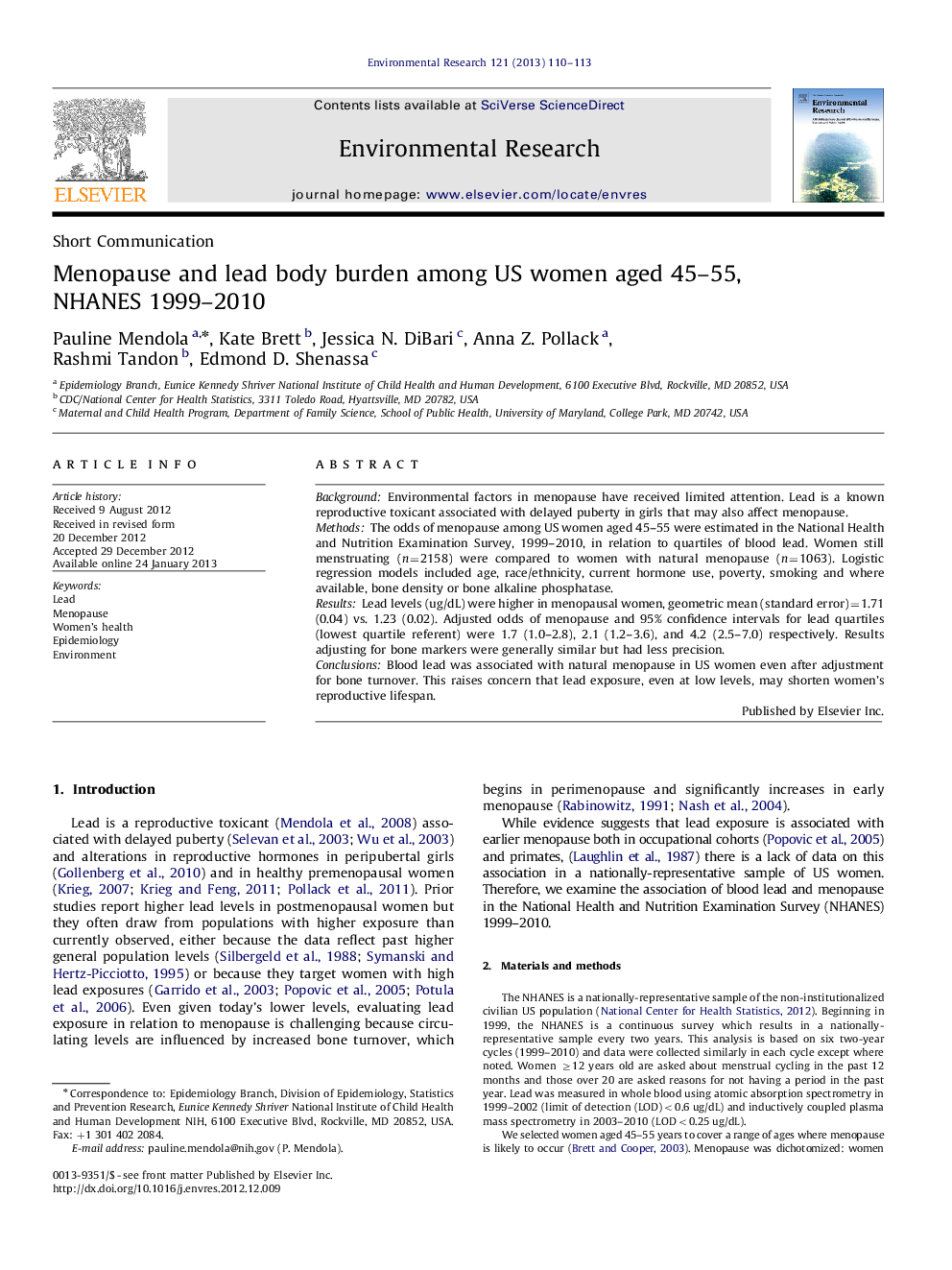| Article ID | Journal | Published Year | Pages | File Type |
|---|---|---|---|---|
| 4469822 | Environmental Research | 2013 | 4 Pages |
BackgroundEnvironmental factors in menopause have received limited attention. Lead is a known reproductive toxicant associated with delayed puberty in girls that may also affect menopause.MethodsThe odds of menopause among US women aged 45–55 were estimated in the National Health and Nutrition Examination Survey, 1999–2010, in relation to quartiles of blood lead. Women still menstruating (n=2158) were compared to women with natural menopause (n=1063). Logistic regression models included age, race/ethnicity, current hormone use, poverty, smoking and where available, bone density or bone alkaline phosphatase.ResultsLead levels (ug/dL) were higher in menopausal women, geometric mean (standard error)=1.71 (0.04) vs. 1.23 (0.02). Adjusted odds of menopause and 95% confidence intervals for lead quartiles (lowest quartile referent) were 1.7 (1.0–2.8), 2.1 (1.2–3.6), and 4.2 (2.5–7.0) respectively. Results adjusting for bone markers were generally similar but had less precision.ConclusionsBlood lead was associated with natural menopause in US women even after adjustment for bone turnover. This raises concern that lead exposure, even at low levels, may shorten women's reproductive lifespan.
